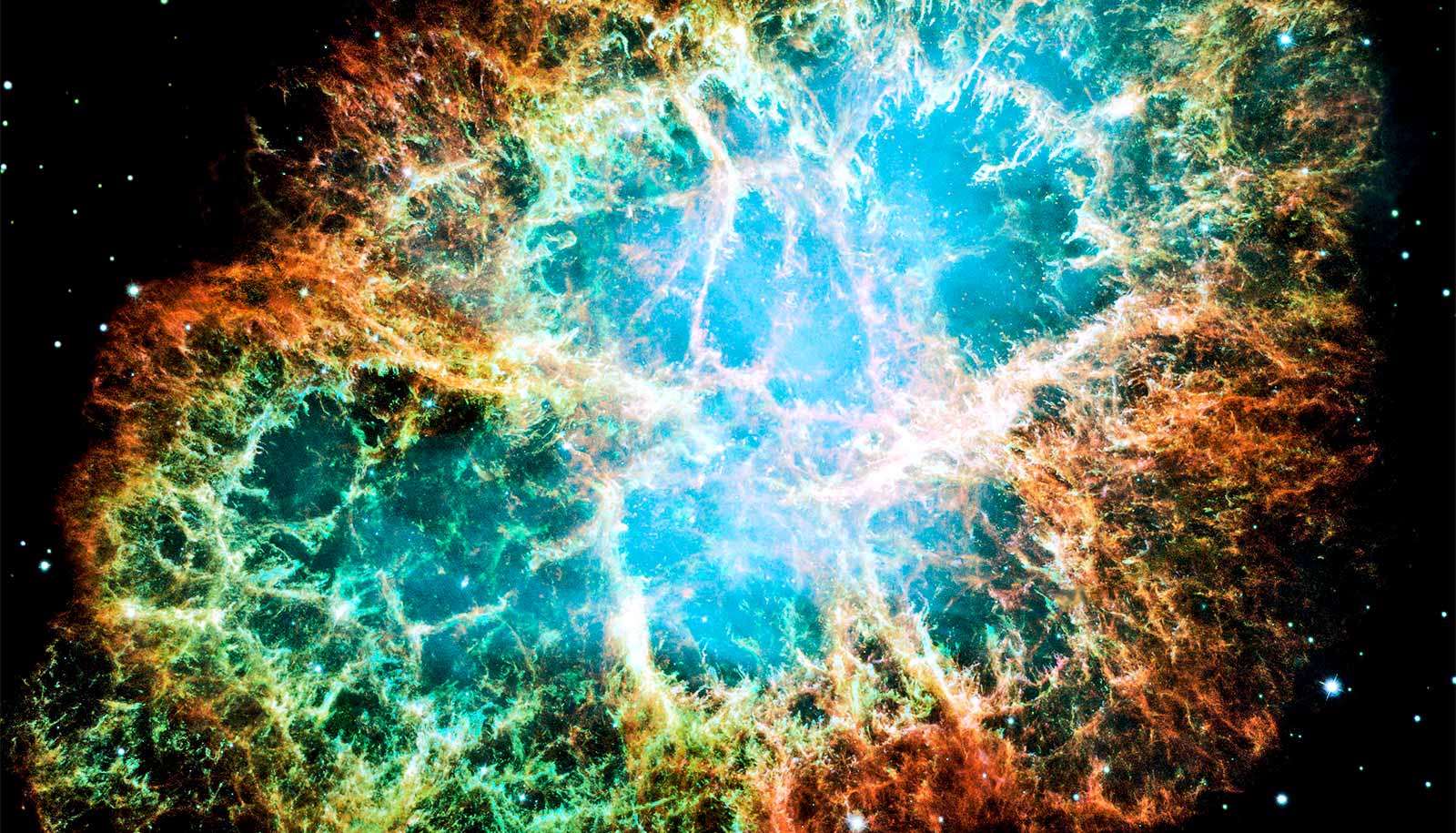Astronomers have found an explanation for the strange occurrence of massive stars located far from their birthplace in the disk of our Milky Way galaxy.
Stars more massive than the sun have very hot cores that drive nuclear energy generation at very high rates. They are among the brightest objects in our galaxy. But because they burn through their hydrogen fuel so quickly, their lifetimes are relatively short, perhaps 10 million years compared to 10 billion years for the sun.
Their short lifetime means that there is little time for them to stray too far from their birthplace. Most massive stars are found in the flat disk part of our galaxy, where gas clouds are dense enough to promote star birth and where astronomers find young clusters of massive stars.
So, when a massive star is found far away from the galaxy’s disk, how did it get there?
“Astronomers are finding massive stars far away from their place of origin, so far, in fact, that it takes longer than the star’s lifetime to get there,” says astronomer Douglas Gies of Georgia State University. “How this could happen is a topic of active debate among scientists.”
This is the problem presented by the massive star known as HD93521 that lies about 3,600 light years above the galaxy’s disk. A new study by Gies and other astronomers reveals a profound discrepancy: The flight time to reach this location far exceeds the predicted age of this massive star.
The astronomers used a new distance estimate from the European Space Agency’s Gaia spacecraft together with an investigation of the star’s spectrum to determine the star’s mass and age as well as its motion through space. They find that HD93521 has a mass about 17 times larger than the sun’s, and this leads to a predicted age of about 5 million years. On the other hand, the motion of the star indicates that its journey from the disk has taken much longer, about 39 million years.
The astronomers explain this strange difference between the star’s lifetime and travel time by suggesting that HD93521 left the disk as two lower-mass and longer-lived stars, rather than the single massive star we see today.
The clue to the mystery is that HD93521 is one of the fastest rotating stars in the galaxy. Stars can spin up through stellar mergers where two close orbiting stars can grow over time and collide to form one star.
“HD93521 probably began life as a close pair of medium-mass stars that were fated to engulf each other and create the single, fast-spinning star we see today,” Gies says.
Such intermediate mass stars live long enough to match the long flight time of HD93521.
HD93521 is not the only case of a massive star found so far away from its birthplace. Graduate student Peter Wysocki is investigating an example of a distant massive binary pair that is probably representative of the stage just before a merger. This star is known as IT Librae, and it has an orientation that creates mutual eclipses as the two stars pass in front of each other. An investigation of the variations in the light output and motions detected in the spectra leads to estimates of the stellar masses.
Wysocki finds a similar conundrum from the mass results—the predicted age is much less than IT Librae’s travel time from the disk. But the study also reveals that the lower-mass star in the pair has already begun to transfer much of its mass to the higher-mass star, initiating the process that may eventually lead to a merger. This means that the higher-mass star is actually older than it appears, having begun life as a lower-mass star.
These distant massive stars provide striking evidence that close pairs of stars can merge to make even larger stars, Gies says, and they are key clues about how rapidly rotating massive stars are able to create black holes with large spins.
The findings appear in The Astronomical Journal.
The National Science Foundation supported the work.
Source: Georgia State University



